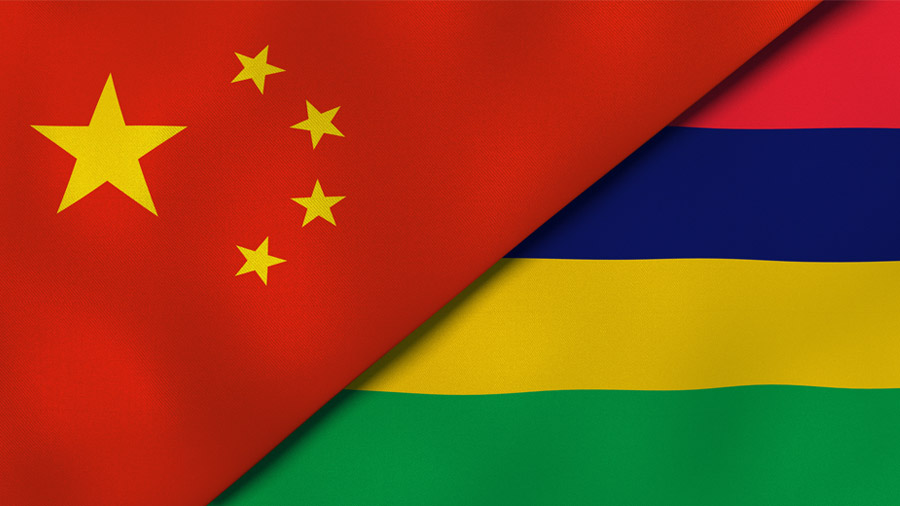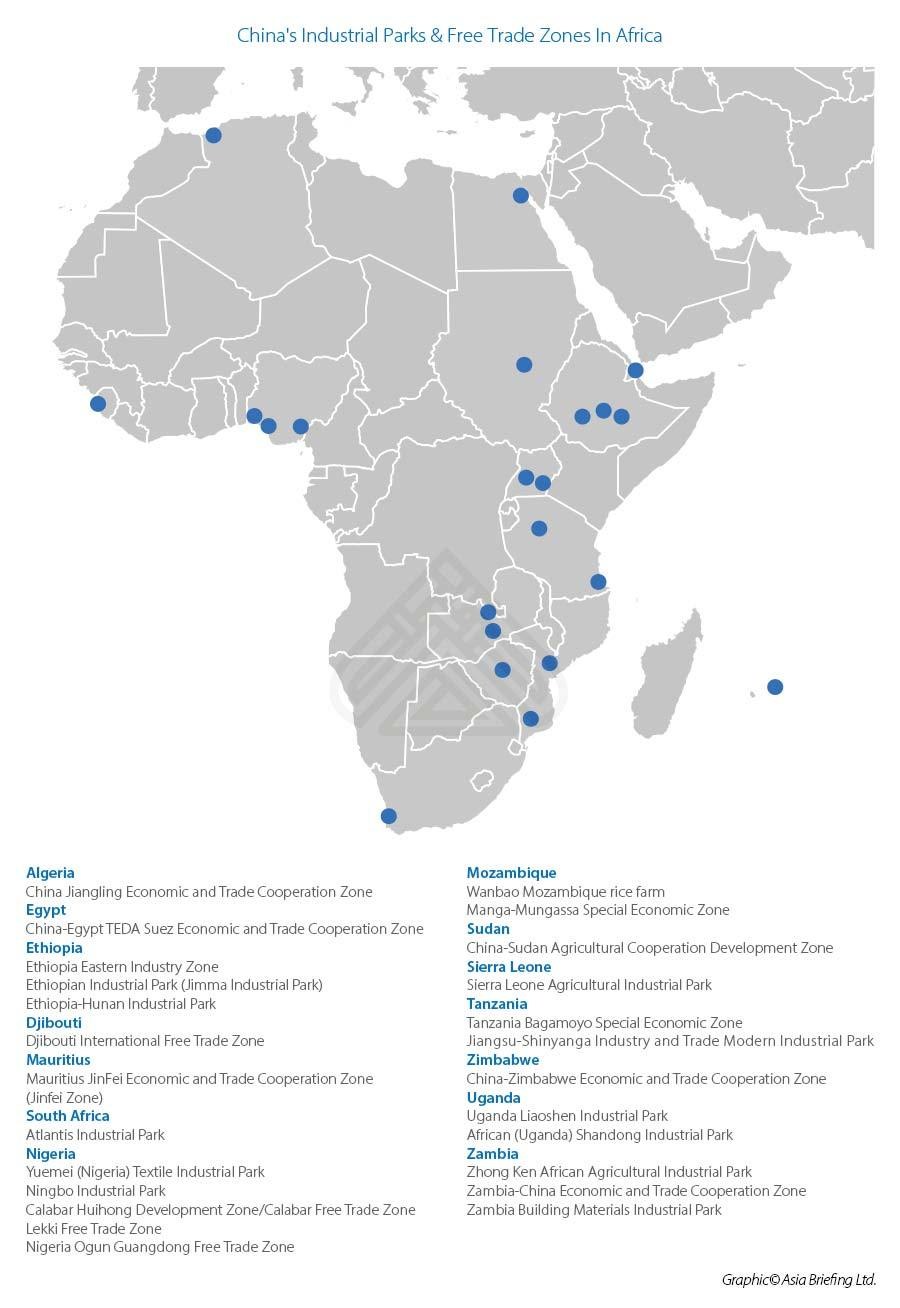Why The China Mauritius Free Trade Agreement Opens Up The African Belt And Road

Op/Ed by Chris Devonshire-Ellis
- Teething problems in bilateral trade to be solved by Mauritius move to services provision
- Mauritius is an offshore gateway to Africa
- Pan-African Continental Free Trade Agreement also came into effect from January 1.
China and Mauritius signed off a Free Trade Agreement earlier this year, China’s first with any African nation. We covered details of the deal over on China Briefing here.
The FTA gives Mauritius duty-free access to about 8,547 products, representing 96 percent of Chinese tariff lines, and also covers more than 40 service sectors, including financial services, telecommunications, ICT, professional services, construction, and health. China and Mauritius pledged to eventually reach zero tariffs on 96.3 percent and 94.2 percent of traded items, respectively. These account for 92.8 percent of import volume for both countries to each other.
Mauritius has a special place in Dezan Shira & Associates history, many years ago we translated the Mauritian Foreign Investment Law, Offshore Company Law and related documentation to allow Mauritian offshore companies access to the China market. Although the FTA has gained a great deal of attention in Mauritius, and India (Mauritius is the largest source of ‘foreign investment’ into India, meaning much of it is round tripping of Indian dividend payments made through Mauritius offshore holding companies) not so much attention has been paid to it as concerns opening the African market for China. In fact, it is a highly strategic move, coinciding with the commencement of the African Continental Free Trade Agreement (AfCFTA) which came into effect on January 1st this year. That deal, which we covered extensively here will prove to be one of 2021’s game changers in terms of global and China trade.
The AfCFTA free trade area is the world’s largest in terms of the number of participating countries since the formation of the World Trade Organization. All African countries have signed up to the deal except for Eritrea, due partially to conflicts with neighboring Ethiopia, however this is expected to be resolved. The agreement initially requires members to remove tariffs from 90% of goods, allowing free access to commodities, goods, and services across the continent. The general objectives of AfCFTA are to:
- Create a single market, deepening the economic integration of the continent.
- Establish a liberalized market through multiple rounds of negotiations.
- Aid the movement of capital and people, facilitating investment.
- Move towards the establishment of a future continental customs union.
- Achieve sustainable and inclusive socio-economic development, gender equality and structural transformations within member states.
- Enhance competitiveness of member states within Africa and in the global market.
- Encourage industrial development through diversification and regional value chain development, agricultural development, and food security.
- Resolve challenges of multiple and overlapping memberships.
The economic impact will be profound. AfCFTA connects 1.3 billion people across 55 countries with a combined GDP valued at US$3.4 trillion.

Mauritius is part of AfCFTA and very much a gateway to South and East Africa.
The FTA is in line with Port Louis’ efforts to diversify its trade and economic links towards the ASEAN states and China.
Port-Louis, the Mauritian capital has long been eager to position itself as a middleman and trade and investment conduit between Africa and Asia. The Chinese think strategically, and Mauritius is important in the strategic sense within the Indian Ocean. However there have been issues in terms of getting Mauritian products to the China market – even though the island is rich in terms of fish, sugar and fruits and has a thriving garment and footwear industry. Mauritius is a wealthy nation by African standards having developed both a significant tourism industry and its offshore financial services business, driving up income and consequently employment costs. That has made Mauritian products too expensive and uncompetitive for the Chinese market. The higher costs have come because wages in Mauritius have grown much faster than elsewhere, including in China itself.
As a result, to remain competitive, Mauritian exporters have relied on outsourcing to countries such as Madagascar, importing more productive foreign labor and relying on rupee depreciation. In 2013, for example, the average hourly wage in the Mauritian textile industry was more than double that in China.
There are other issues: Mauritian exporters are just not equipped to supply goods on the scale demanded by Chinese importers. One of the problems that Mauritian exporters have is that dealing with Chinese companies is not easy because they are accustomed to dealing in huge volumes, which Mauritian exporters are just not able to fulfil, so Chinese importers simply turn to other suppliers able to do business on a large-scale. A trade agreement is between governments, but the business itself will still have to be done between companies in the two countries.
Another factor for Mauritius is the ‘problem of complementarity’, meaning that what Mauritius excels at exporting, China does it too, and does it better and cheaper. In fact, Mauritius’ largest export, textiles, are in direct competition with China.
Chinese investments into Mauritius, originally well meant, have also foundered due to other, unforeseen pressures. Back in the mid-2000’s the Chinese government announced it was setting up special economic zones in several African countries, including developing 211 hectares of land in Mauritius Riche-Terre area for setting up light industrial plants designed for exports to Africa, which was intended to net an estimated US$200 million annually for Mauritius and create jobs. But following the 2008 global economic crisis and a change in the Chinese companies involved in the project, the project was rebranded in 2009 from light manufacturing to real estate. Subsequently, the Mauritian government took back 80 percent of the land leased to Chinese companies, with the project whittled down to a hotel, conference centre and a wedding venue.
This history of false starts in economic ties between Mauritius and China underscores the importance of keeping expectations about the potential benefits of the new FTA realistic. The agreement cuts tariffs on multiple Mauritian exports, such as fish and fish products, live animal exports and instant noodles as well lowering tariffs on sugar exports from Mauritius. Another potential sector that could benefit are jewelry exports, where a great deal of Indian gem processing businesses is located. The Mauritius Economic Development Board estimates that the FTA could potentially lead to a Rs12 billion boost to exports. But the actual potential for exports to China from Mauritius is narrow; the country won’t be able to export garments, as China does that, China is also great at producing food and agricultural products such as sugar and technology, where China is arguably the best in the world. Mauritian companies therefore will more likely benefit from more niche products such as rum, fish and jewelry. But for a small economy, that is still enough to make an impact.
However, the main benefit for Mauritius out of the FTA with China will probably not come from increased exports of its manufactured goods at all. Instead, we expect Mauritius to gain from increasing services with China.
The FTA opens 130 service sectors in Mauritius up to Chinese investment, including communications, education, finance, tourism, culture, transport, and traditional Chinese medicine. Where Mauritius can really benefit is to become a base for Chinese exports to Africa, not in terms of goods because the manufacturing base is too narrow but in services. This is where the strategic part of China’s Belt & Road Initiative makes itself clear; it is no coincidence that the African Continental Free Trade Agreement has also come into effect in the same period as the China-Mauritius FTA.
Mauritius’ future then is to perform a similar function as it does for India, an offshore gateway to and from Africa. That in turn provides foreign and local investors in Mauritius with opportunities to service the Africa-China trade – including professional services, lawyers, accountants, translators, and import-export agents.
Related Reading
- How Foreign Investors Can Benefit From The Belt & Road Infrastructure Build In Africa
- Eight African Belt And Road Initiative Projects That Global Investors Should Be Aware Of
- Dissecting the India-Mauritius Amended Tax Treaty
About Us
Silk Road Briefing is written by Dezan Shira & Associates. The firm has 28 offices throughout Asia, and assists foreign investors into the region. For strategic advisory and business intelligence issues please contact the firm at silkroad@dezshira.com or visit www.dezshira.com





